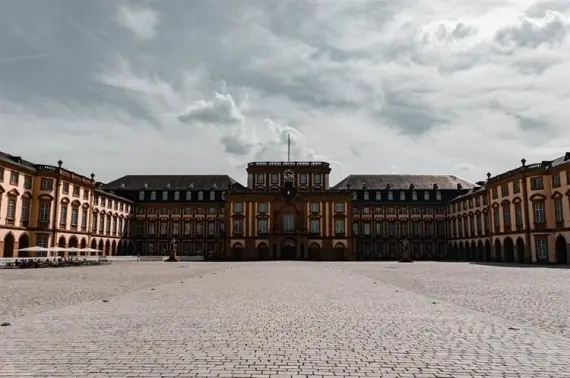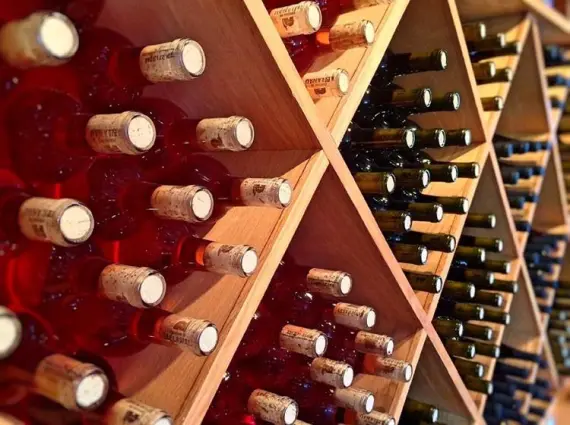How to travel from MANNHEIM to JASLO?
MANNHEIM

Mannheim is located in the southwestern part of Germany, in the state of Baden-Württemberg. With a population of more than 311,000, it is the second city in the region after Stuttgart. Mannheim is famous for its universities and research units, as well as its automotive industry - the Mercedes-Benz plant is located there, and the John Deere concern is headquartered there. In addition, it has the second largest inland port in Germany.
Mannheim - sights and attractions of the square city
It is best to start visiting Mannheim from the old town, designed according to the 18th-century baroque urban layout resembling a checkerboard. Hence it is common to refer to Mannheim as the "square city." An important attraction there is the Mannheim Palace - the largest Baroque building of its kind and the second largest in Europe, just after the Palace of Versailles. Its richly decorated, impressive interiors are worth seeing.
Another of the city's symbols is a sandstone water tower from 1889 surrounded by a small park. Also worth a visit is the Baroque Jesuit church dating from the first half of the 18th century. The temple, dedicated to Saints Ignatius Loyola and Francis Xavier, has several beautiful side altars, interesting frescoes and a Baroque organ inside.
Mannheim - transportation and getting around
Mannheim is the second largest city in Baden-Württemberg, lying about 70 kilometers from Frankfurt. The city is well connected. The central Mannheim bus station is located in the very center, right next to the city's main train station. If you are interested in buses to Mannheim, find the right connection for you on our website. When planning to visit Mannheim, the bus will be a convenient and cost-effective choice.
Mannheim is located in the southwestern part of Germany, in the state of Baden-Württemberg. With a population of more than 311,000, it is the second city in the region after Stuttgart. Mannheim is famous for its universities and research units, as well as its automotive industry - the Mercedes-Benz plant is located there, and the John Deere concern is headquartered there. In addition, it has the second largest inland port in Germany.
Mannheim - sights and attractions of the square city
It is best to start visiting Mannheim from the old town, designed according to the 18th-century baroque urban layout resembling a checkerboard. Hence it is common to refer to Mannheim as the "square city." An important attraction there is the Mannheim Palace - the largest Baroque building of its kind and the second largest in Europe, just after the Palace of Versailles. Its richly decorated, impressive interiors are worth seeing.
Another of the city's symbols is a sandstone water tower from 1889 surrounded by a small park. Also worth a visit is the Baroque Jesuit church dating from the first half of the 18th century. The temple, dedicated to Saints Ignatius Loyola and Francis Xavier, has several beautiful side altars, interesting frescoes and a Baroque organ inside.
Mannheim - transportation and getting around
Mannheim is the second largest city in Baden-Württemberg, lying about 70 kilometers from Frankfurt. The city is well connected. The central Mannheim bus station is located in the very center, right next to the city's main train station. If you are interested in buses to Mannheim, find the right connection for you on our website. When planning to visit Mannheim, the bus will be a convenient and cost-effective choice.
JASLO

Jaslo is a city of more than 35,000 people in southeastern Poland's Subcarpathian province. It is located at the foot of the Carpathian Mountains at the confluence of three rivers: the Wisłoka, Ropa and Jasiolka. It is an excellent starting point for trips to the Beskid Niski and Magurski National Park or the Ciężkowice foothills. Its picturesque location, proximity to unspoiled nooks and crannies, but also interesting history and a multitude of attractions attract more and more tourists.
Jaslo - attractions to see in the city
While in Jaslo, you must see the Collegiate Church of the Assumption of the Blessed Virgin Mary, famous for its medieval paintings, as well as the Sroczynski Palace with its surrounding park. Also worth a visit is the sanctuary of St. Anthony, Jaslo's patron saint, with a statue of St. Anthony that survived war damage and a baroque painting "Stigmatization of St. Francis" from the turn of the 17th and 18th centuries.
An interesting geological site within the city are the Jaslo rocks, which are exposed complexes of sandstone, shale and limestone with exposed fish impressions. In addition, a few kilometers from Jaslo is Karpacka Troja, an open-air archaeological museum presenting one of the oldest settlements in Poland, dating back to the Bronze Age.
It is impossible to get bored in Jaslo. The city is the capital of Subcarpathian geocaching, and also offers 6 different scenarios for an urban tourist game, allowing you to visit Jaslo in an active and unconventional way, and at the end discover its mystery or reach its treasure.
Jaslo - how to get there
Two national roads run through the city: 28 and 73, as well as provincial road 992. In Jaslo is located a railroad station, which is the main junction in the south of the Subcarpathian province. Right next to it is a bus station. You can find a list of available bus connections to and from Jaslo on our website. If you are planning to visit the picturesque and idyllic Subcarpathian region, bus Jaslo will be a great choice.
Jaslo is a city of more than 35,000 people in southeastern Poland's Subcarpathian province. It is located at the foot of the Carpathian Mountains at the confluence of three rivers: the Wisłoka, Ropa and Jasiolka. It is an excellent starting point for trips to the Beskid Niski and Magurski National Park or the Ciężkowice foothills. Its picturesque location, proximity to unspoiled nooks and crannies, but also interesting history and a multitude of attractions attract more and more tourists.
Jaslo - attractions to see in the city
While in Jaslo, you must see the Collegiate Church of the Assumption of the Blessed Virgin Mary, famous for its medieval paintings, as well as the Sroczynski Palace with its surrounding park. Also worth a visit is the sanctuary of St. Anthony, Jaslo's patron saint, with a statue of St. Anthony that survived war damage and a baroque painting "Stigmatization of St. Francis" from the turn of the 17th and 18th centuries.
An interesting geological site within the city are the Jaslo rocks, which are exposed complexes of sandstone, shale and limestone with exposed fish impressions. In addition, a few kilometers from Jaslo is Karpacka Troja, an open-air archaeological museum presenting one of the oldest settlements in Poland, dating back to the Bronze Age.
It is impossible to get bored in Jaslo. The city is the capital of Subcarpathian geocaching, and also offers 6 different scenarios for an urban tourist game, allowing you to visit Jaslo in an active and unconventional way, and at the end discover its mystery or reach its treasure.
Jaslo - how to get there
Two national roads run through the city: 28 and 73, as well as provincial road 992. In Jaslo is located a railroad station, which is the main junction in the south of the Subcarpathian province. Right next to it is a bus station. You can find a list of available bus connections to and from Jaslo on our website. If you are planning to visit the picturesque and idyllic Subcarpathian region, bus Jaslo will be a great choice.
© 2025 Sindbad
UX/UI Design by Verseo
